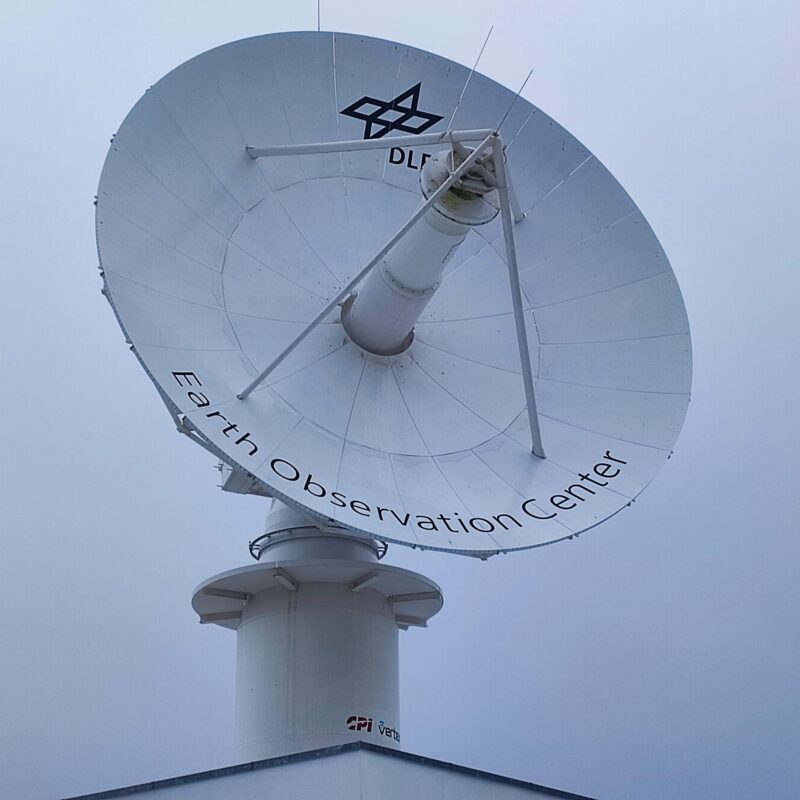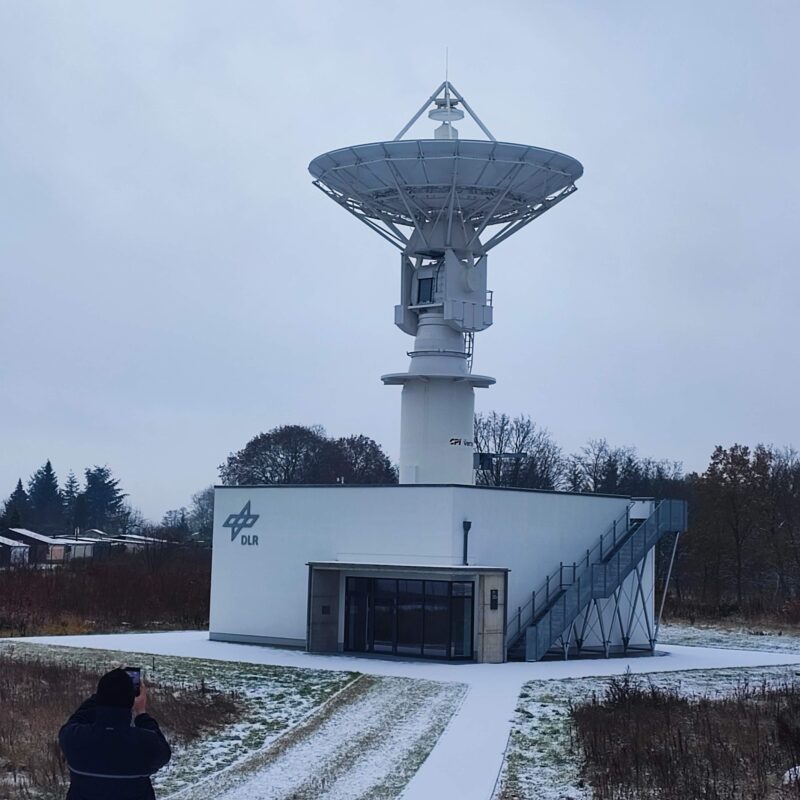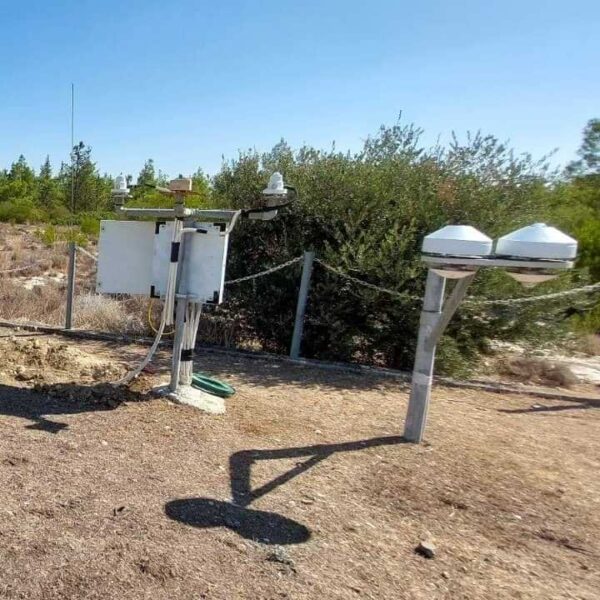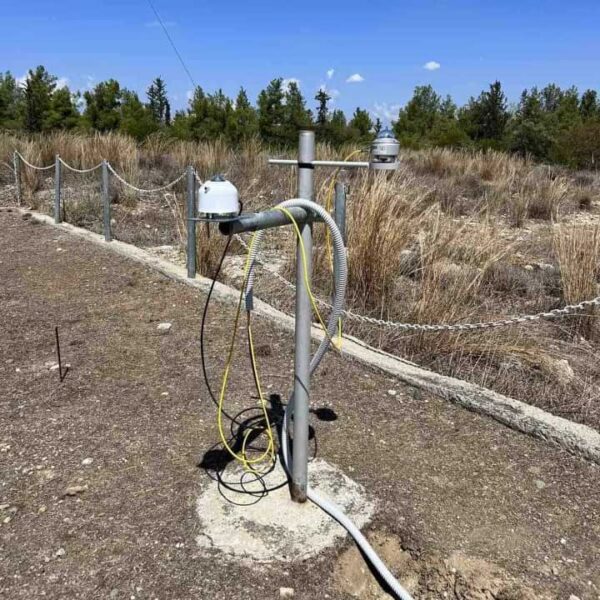The deployment of state-of-the-art infrastructure will enable the ERATOSTHENES CoE to conduct cutting edge research in all the thematic areas identified by ERATOSTHENES CoE as well as provide the competitive advantage required to conduct innovative and integrated basic and applied research. The availability of this state-of-the-art infrastructure in all relevant areas will provide additional research opportunities to the ERATOSTHENES CoE.
During RP3, infrastructure activities for the ERATOSTHENES CoE focused on the procurement procedures, contracting, receiving, installing, and operating of the strategic equipment and state-of-the-art infrastructure, such as the Ground-based Remote Sensing station (GBS), the Satellite Data Acquisition Station (DAS), the Solar infrastructure equipment, the computing infrastructure of the Center, the equipment for the Agriculture sector and the Geodetic equipment. In addition, tender procedures for the acquisition of personal laptops, monitors and computing desktops were finalized in order to ensure the smooth operation of the Centre. Moreover, ERATOSTHENES CoE’s infrastructure department has undertaken all the necessary processes to deliver a new building through CUT’s commitment, in order to cover ERATOSTHENES CoE’s increasing needs.
The ERATOSTHENES CoE has acquired through EXCELSIOR project a number of high-quality atmospheric instrumentation for aerosols, clouds and solar radiation measurements, in order to conduct research at the island of Cyprus. The atmospheric sector focused on the establishment of the ground-based atmospheric remote sensing station (GBS).
The GBS as part of the Cyprus Atmospheric Remote Sensing Observatory (CARO) National Facility (NF) consolidates the necessary infrastructure to set up the aerosol and cloud remote sensing observational platforms for continuous monitoring of aerosol and clouds providing ground truthing observations and a reference station for calibration/ validation of satellite missions. The research instruments are installed within two containers. Additionally, dedicated servers for the instruments control and data processing are installed in the containers, making the GBS independent from external needs, and ready to be deployed for campaign measurements outside Cyprus.
CARO is a National Facility (NF) for remote sensing of aerosol and clouds and planned to become a ACTRIS National Research Infrastructure facility for Cyprus consisting of the aerosol remote sensing (ARS) observational platform and the cloud remote sensing (CRS) observational platform. Located in the center of Limassol, Cyprus, CARO currently operates a multiwavelength Raman LiDAR PollyXT-Cyp for aerosol profiling, a scanning Doppler LiDAR for wind profiling and the sun/sky photometer of the Aerosol Robotic Network. During 2024, the CARO facility will operate a 35 GHz cloud radar, microwave radiometer, a disdrometer and a ceilometer. As soon as both observation platforms for aerosol and cloud vertical profiling are operational, CARO will become one of the most advanced facilities placed in the EMMENA region with high interest on atmospheric composition structure.
The aerosol remote sensing instruments of the GBS contributes to the GAW network in WMO Region VI – Europe as station 0-196-0-LIM. The station is situated in the centre of the city of Limassol and represents an urban Eastern Mediterranean European coastal site. Traffic and local dust emissions are major local sources. The station is located about 800m from the coastline of Limassol and at the North of the station in a distance of 30 km there is the Troodos Mountain (~2km height). The station is co-located with the TEPAK (0-196-0-01389) Meteorological station.
In addition to the aerosol and cloud remote sensing observational platforms, CARO includes a solar radiation station and the solar radiation network of ERATOSTHENES CoE. The energy sector is responsible for the establishment of the solar radiation stations which consists of state‐of‐the-art remote sensing facilities (solar spectroradiometers, photometers and broadband radiometers) operating fully automated 24/7.
Currently the PollyXT-CYP lidar real-time observation can be accessed on the PollyNet website.
The Doppler wind lidar measurements can be accessed on TROPOS data visualization portal. (this link works in http only, avoid https)
Sun-photometer observations are available on the AERONET webpage.
For access to the PollyXT-Cyp aerosol lidar obervations click here.
For access to the Snoopy Doppler wind lidar observations click here. (this link works in http only, avoid https)
For access to the sun-photometer observations click here.
The final component (cloud radar) delivery is scheduled for Q1 2024 and it will be installed in the delicate container at the TROPOS facility. After the final installation, the GBS station will be shipped to the ERATOSTHENES premises in Limassol.


ERATOSTHENES Centre of Excellence is in the process of establishing the first Earth Observation Data Acquisition Station (DAS) in Cyprus. A place with unique geostrategic position at the crossroads of three continents and with excellent weather conditions that can contribute significantly to various sectors of Earth Observation in the EMMENA region.
The DAS will be equipped with a three-band feed and capabilities for simultaneous reception of all three bands (S, X and Ka) making it suitable to support current as well as future missions. The size of the reflector will allow the station to successfully meet the stringent criteria set up by International and National bodies in terms of service availability and reception margins. The electromechanical structure of the antenna will allow tracking and acquisition of data from satellites orbiting as low as 400km above the surface of the Earth. The station will be hosted on one of Cyta’s fully developed Teleports. The proposed infrastructure will consist of State-of-the-Art facilities for acquisition, processing and storage of data. Data can be securely transported through Cyta’s extensive fiber network that offers interconnectivity to major European and Global Hubs.
The procurement of the DAS will allow the Center:
Known players such as DLR and CYTA have a prominent role in the successful installation, commissioning, testing and operation of the DAS.
The Business Plan is a necessary tool that enables the Centre to:
After the tender submission, an intensive effort by the Evaluation Committee of the tender took place. The evaluation report was finalized on July. At the first meeting, the formal conditions for the tenderers’ participation were examined and some clarifications were asked. At the second meeting, the technical specifications were checked as presented by each Tenderer, and some clarifications were asked again. Finally, the third meeting was dedicated to the evaluation of the financial offers. The final ranking of the bids was revealed and the successful Tenderer was recommended to the Eratosthenes BoD.
The successful tenderer was informed on September 2023 after ERATOSTHENES CoE’s BoD decision to award the contract to Safran Data Systems.


The Cyprus Solar Network (CSN) is a ground-based network consisting of five stations designed for monitoring solar energy and solar ultraviolet (UV) radiation. These stations have been strategically selected to cover different geographical areas within the Republic of Cyprus. The central station is located in Limassol, with the other four stations located in Polis Chrysohous, Kyperounta, Athalassa, and Xylofagou.
The Limassol station serves as the calibration station for the network and is equipped with advanced instrumentation to measure various aspects of solar radiation. This station includes:
The other four stations (Polis Chrysohous, Kyperounta, Athalassa, and Xylofagou) primarily provide measurements of global shortwave downwelling irradiance and erythemal UV irradiance. This distributed network of stations offers a comprehensive assessment of solar conditions in various regions of Cyprus, making it a valuable resource for researchers and organizations interested in solar energy and UV radiation monitoring in the area.
A recent open procurement procedure (Q3 2023) for the acquisition of the Agriculture equipment of the ERATOSTHENES Centre of Excellence has been issued on September 2023. All necessary legislative steps were followed such as market research, preparation of detailed specifications and drafting of tender documents. The tender submission has been planned for the October 2023.
A new open procurement procedure for the acquisition of the Geodetic equipment of the ERATOSTHENES CoE (Q4 2023) is being prepared. In this stage, the market research has been concluded and the Specification Committee is preparing the detailed specifications according to the requirements of “The 2016 law on the coordination of the procedures for the award of public contracts for supplies, works and services and for related issues, 73(I)/2016”. This tender it is planned to be finalized and issued by the end of October 2023.
The ERATOSTHENES Centre of Excellence (ERATOSTHENES CoE), is establishing its computing and server infrastructure at the CUT Data Centre. Specialized servers and workstations were included in the procurement.
An open tender procedure was carried out successfully. The contract signed and the equipment was installed successfully.